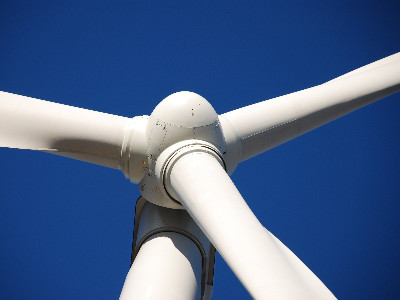Tuesday 8th March 2022, 2:03pm

Mountaineering Scotland has welcomed the decision by Scottish Ministers to refuse the Glenshero windfarm proposal in the southern Monadhliaths.
If it had gone ahead, it would have been a gross intrusion of development in a sensitive landscape, affecting the wild qualities of the landscape to the south, which includes the summit of Creag Meagaidh.
The proposed development had been designed to appear as a 39-turbine extension to the adjacent Stronelairg Wind Farm. Mountaineering Scotland objected to this proposal in November 2018 because of its visual impact on mountaineering interests and consequential impacts on recreation.
In May 2020 a further large 36-turbine windfarm to the west and east of Stronelairg, Cloiche, was proposed, extending the potential impact even further.
Mountaineering Scotland considers carefully which windfarm developments that we object to under our agreed Windfarm Position Statement and we have objected to only around 1 in 20 applications coming forward.
We are fully committed to tackling both the climate and biodiversity crisis and the move to renewable energy and net zero emissions however this does not have to come at the cost of the landscape and environment we are trying to protect.
It was frustrating that this proposal had even come forward, as in 2014 Stronelairg was reduced in size by 16 turbines by the Scottish Ministers, explicitly to lessen landscape and visual impact. At the time the Scottish Government, in its decision on Stronelairg, said: “Ministers consider that the reduction in scale of the proposal has helped to mitigate the visual and landscape impacts of the development, and has satisfactorily addressed these impacts to help bring them to an acceptable level.”
Glenshero seemed a blatant attempt to reinstate the turbines which had been previously rejected, thereby undermining the planning system. Glenshero and Cloiche combined would have the effect of establishing turbines in the areas from which they were excluded by the 2014 consent and expand development further, and using larger turbines.
Our planning volunteer, Dr Dave Gordon, gave robust evidence to the Glenshero Public Local Inquiry on behalf of Mountaineering Scotland, on the significant visual impacts this proposal would have on the landscape, valued by hillwalkers and others who appreciate what wild landscapes offer.
This approach was borne out in the decision by the Scottish Government to refuse permission to build it. The decision stated that the wildness qualities of the Wild Land Area to the south would be substantially affected across an extensive portion of its area.
Mountaineering Scotland CEO, Stuart Younie, said, “We welcome this ratification by the Scottish Government of their previous decision for Stronelairg. Turbines would have spilled out onto the outward facing slopes above the route from Laggan to the Corrieyairack Pass, and would have dominated the landscape of the upper glens of the Spey and Roy, from which Stronelairg is invisible.
“Although not proposed for construction in a Wild Land Area, we are concerned that this would have been visible from a very extensive part of the Braeroy-Glenshirra-Creag Meagaidh Wild Land Area and would have been very visually intrusive in the landscape.
“I’d like to thank Dave Gordon for all the efforts he took in representing the Mountaineering Scotland position on this application and trust that the developers of the adjacent Cloiche windfarm proposal take note and recognise that this is not ‘the right development in the right place’. We expect them to do the sensible thing and withdraw their proposal from the planning system, saving time and money for everyone involved.”
Scottish Governments targets for renewable power generation can still be achieved without this controversial and unwelcome development. There is currently a blockage in the windfarm consents system as many windfarm proposals that receive consent are not built. Instead the developers, once consent has been obtained, submit new applications for even more, or larger turbines, or as in this case, resubmit proposals that were previously rejected as unsuitable, so the whole process has to start again.
All this does is further delay the production of green energy whilst we also fail to address the critical question of how our renewable power can be stored effectively and reused when it is most needed.
Without a nationally coordinated strategy the development of windfarms is opportunistic, relying on landowners sympathetic to the developers’ ambitions. Although in some cases windfarms can benefit local communities, as result of the current system these are not always the right developments in the right place.